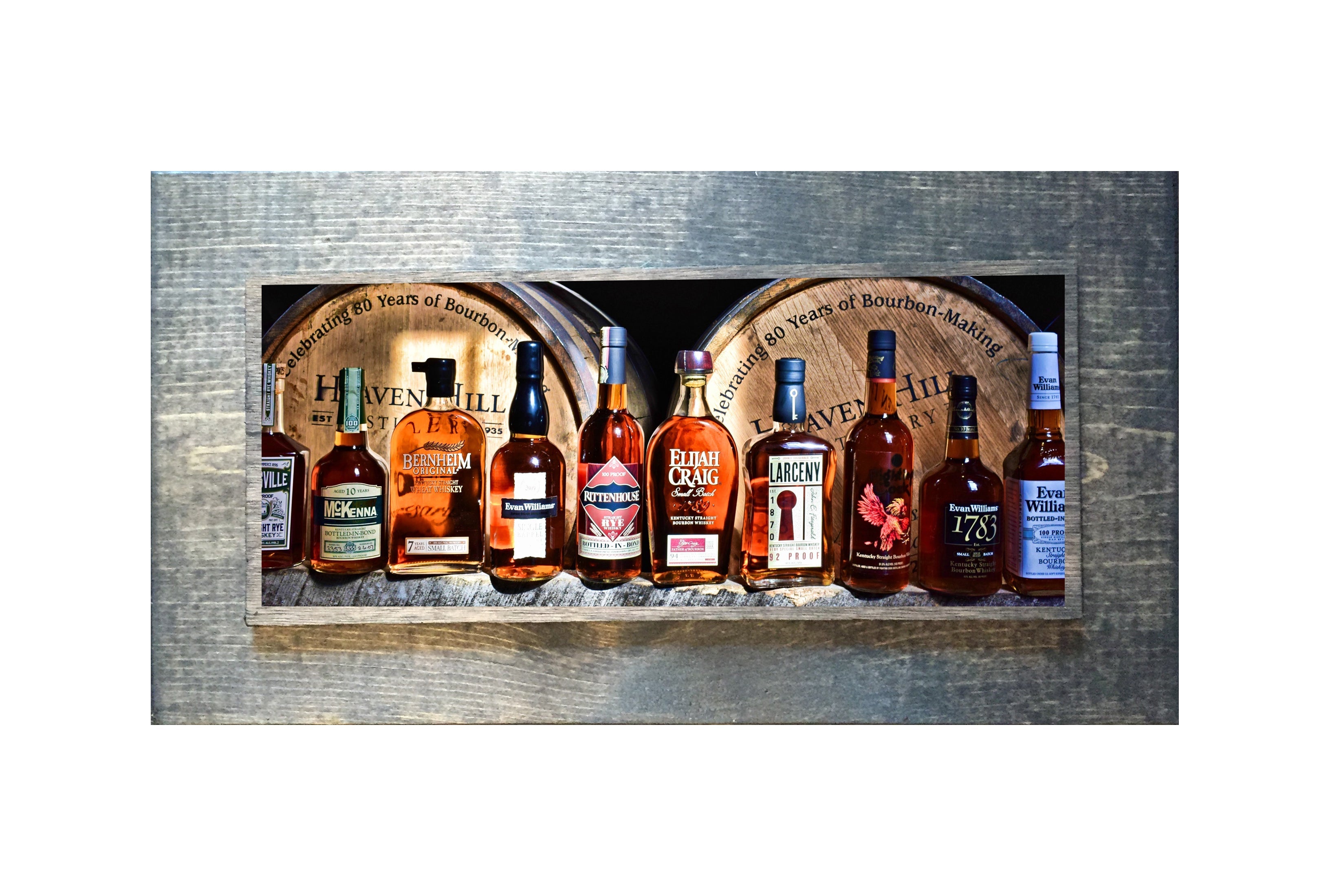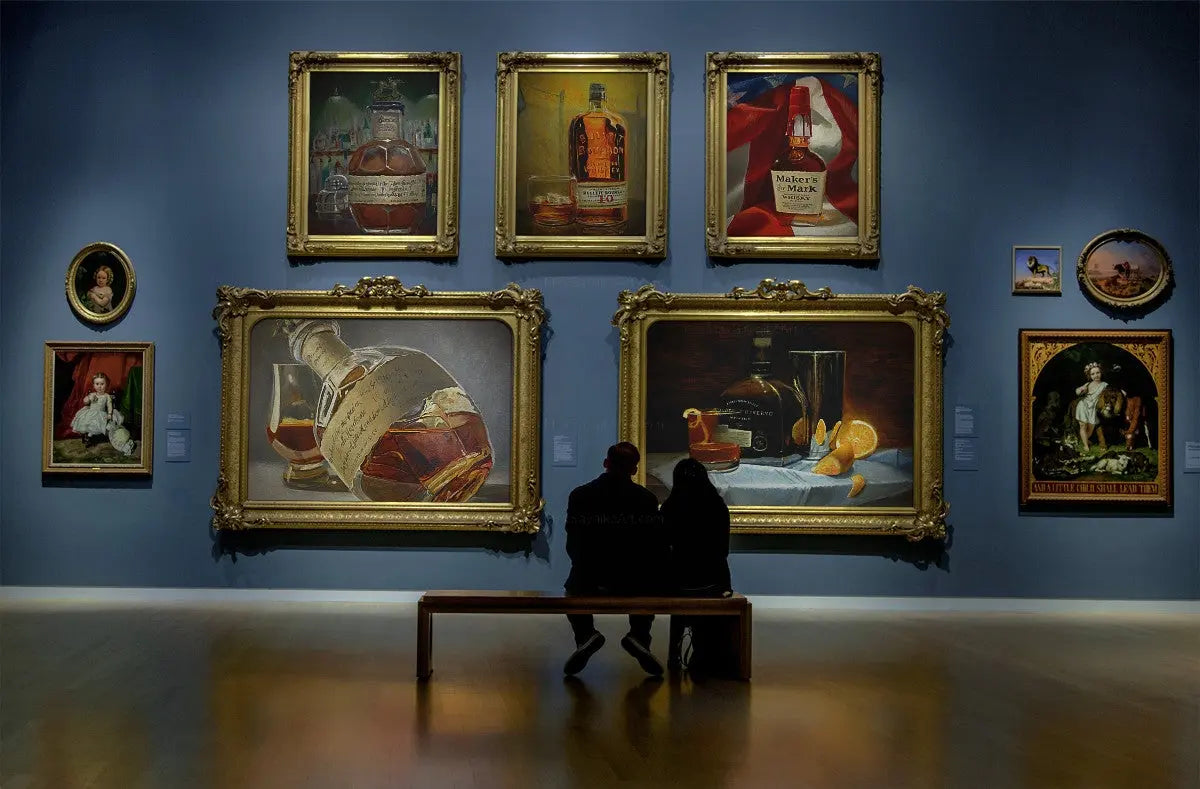Realism Art in the Whiskey Market: Portraying Moments of Purification
Realism Art in the Whiskey Market: Portraying Moments of Purification
Blog Article
The Importance of Whiskey Art in Celebrating Heritage and Workmanship in the Beverage Sector
The complex relationship in between whiskey art and the party of heritage and workmanship within the beverage industry can not be overstated. Through attentively designed labels and containers, bourbon brand names envelop their historic roots and the artisanal skills that specify their manufacturing techniques. This artistic measurement not just improves market charm but likewise acts as an avenue for cultural narration, cultivating a deeper connection in between the customer and the craft. As we explore the various facets of this topic, intriguing inquiries regarding the influence of contemporary patterns on conventional methods emerge, prompting additional assessment.
The Historic Origins of Whiskey
At the heart of whiskey's allure lies a rich tapestry of historical origins that trace back to ancient human beings. The beginnings of bourbon can be linked to the distillation techniques of the Sumerians and Babylonians around 2000 BCE, where very early forms of fermented grain drinks started to arise. Nevertheless, it remained in the Center Ages that the art of purification developed considerably, specifically in Ireland and Scotland, causing the production of whiskey as we understand it today.
The term "whiskey" itself originates from the Gaelic word "uisce beatha," meaning "water of life." This phrase underscores the social value of bourbon in Celtic societies, where it was often related to rituals, celebrations, and common bonding. By the 15th century, distillation ended up being a recognized craft within reclusive neighborhoods, leading the way for the facility of legal distilleries.
As profession courses expanded, bourbon's popularity grew, transcending regional limits and recording the interest of connoisseurs worldwide. Whiskey Art. This historical journey reflects not just the craftsmanship behind scotch production yet additionally its integral function in cultural and social contexts, noting it as a substantial beverage throughout history
Artistic Expression in Branding
Scotch branding stands as a compelling junction of creativity and commerce, where visual identity plays a critical duty in shaping consumer perception. The visual appeals of whiskey tags, packaging, and marketing materials show not only the brand's tale yet likewise its core values and heritage. With imaginative expression, distilleries share a narrative that resonates with consumers, evoking feelings and stimulating connections.
The use of shade, typography, and images in branding offers to distinguish products in a saturated market. Standard motifs may evoke a feeling of credibility and workmanship, while contemporary layouts can represent technology and forward-thinking. This strategic imaginative instructions enhances brand recognition and loyalty, enabling consumers to forge a personal connection with the whiskey they pick.
Furthermore, creative expression in branding often acts as a celebration of local heritage. Distilleries often incorporate local icons or historic referrals into their designs, producing a local color that invites consumers to participate in a broader cultural experience. Inevitably, the artistry behind scotch branding not just enhances aesthetic charm but likewise enriches the overall narrative of the brand, fostering a deeper admiration for the workmanship and heritage ingrained in each container.
Craftsmanship in Container Style
The creativity apparent in scotch branding extends past aesthetic identification to encompass the craftsmanship included in bottle style. Each bottle acts as a vessel not simply for the spirit within, but also for the tale it outlines its quality, origin, and custom. The style process requires careful attention to information, as aspects such as shape, closure, and material contribute substantially to the general understanding of the bourbon.
Workmanship in container layout involves selecting high-grade glass that can improve the scotch's shade and quality, while also offering a responsive experience for the consumer. The silhouette of the container have to be both aesthetically enticing and useful, typically showing the heritage of the brand. Lots of distilleries decide for distinct forms or printed logo designs that evoke a feeling of credibility and history.
In addition, the label layout and typography play an important function in interacting the brand name's narrative. Bourbon Art. A well-crafted bottle not only astounds the customer's eye yet additionally strengthens the brand name's dedication to quality and tradition. By doing this, the craftsmanship of container design comes to be an important facet of the whiskey experience, combining artistry with a profound regard for heritage
Cultural Value of Scotch Art
Celebrating tradition and workmanship, the cultural importance of scotch art transcends simple visual appeals, intertwining with the historic and social stories of the areas from which it stems. Each bottle offers as a canvas, depicting the special tales, folklore, and traditions that have actually formed local whiskey-making techniques. The intricate designs typically show the heritage of the distillers, including symbols and concepts that resonate with the society and values of their neighborhoods.

Additionally, scotch art plays an important role in communal events and celebrations, serving as a concrete web link between individuals and their shared experiences. By appreciating the creativity in scotch product packaging, customers grow a deeper understanding and respect for the craft, inevitably enhancing their enjoyment of the drink itself.
Modern Trends in Scotch Presentation
Recently, the discussion of bourbon has actually developed to show modern preferences and fads while still honoring traditional craftsmanship - Limited Edition. Distilleries are significantly concentrating on visual aspects that improve the overall alcohol consumption experience, connecting the gap in between heritage and read what he said modernity
Ingenious container layouts have actually arised, commonly integrating sustainable products and artistic labels that inform compelling tales. Numerous brands currently work together with local artists, infusing their products with distinct visual expressions that resonate with consumers. In addition, limited-edition launches are usually packaged in collectible containers, including worth and allure for lovers.

Verdict
To conclude, bourbon art works as a vital channel for revealing the heritage and workmanship inherent in the drink industry. Through elaborate branding, cutting-edge bottle layouts, and culturally considerable imaginative components, scotch brands effectively recognize their customs and attach with consumers. This artistic story not just boosts the recognition of whiskey yet additionally enhances area identification and satisfaction amongst manufacturers. Inevitably, whiskey art plays a crucial duty in preserving and commemorating the abundant social tapestry of whiskey-making.


Workmanship in container style involves choosing top quality glass that can boost the whiskey's color and clearness, while also giving a responsive experience for the customer. In like this this means, the craftsmanship of bottle style ends up being a vital element of the bourbon experience, merging creativity with a profound respect for heritage.
In verdict, bourbon art offers as a vital conduit for sharing the heritage and workmanship fundamental in the beverage market.
Report this page